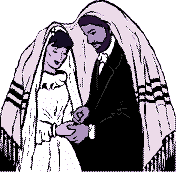
The practice
In strictly Orthodox Jewish circles, dating is limited to the search for a marriage partner. Both sides (usually the parents, close relatives or friends of the persons involved) make inquiries about the prospective partner, e.g. on his/her character, intelligence, level of learning, financial status, family and health status, appearance and level of religious observance.
A shidduch often begins with a recommendation from family members, friends or others who see matchmaking as a mitzvah, or good deed. Some engage in it as a profession and charge a fee for their services. A professional matchmaker is called a Shadchan.
After the match has been proposed, the prospective partners meet a number of times to gain a sense of whether they are right for one another. The number of dates prior to announcing an engagement may vary by community. In some, the dating continues several months. In stricter communities, the couple may decide within a few days. Also the age when shidduchim start may vary by community.
In frum circles, especially among Hassidim,eighteen is the age when shidduchim start and shadchanim take notice.
Those who support marriage by shidduch believe that it complies with traditional judaism´s outlook on Tzeniut, modest behaviour in relations between men and women, and prevents promiscuity. It may also be helpful in small Jewish communities where meeting prospective marriage partners is limited, and this gives them access to a broader spectrum of potential candidates.
Also, the decision as to whether or not the mate is good can be made with the emotional boundary of the shadchan who, if so desired by the couple, can call and talk to either side in the beginning stages of the dating to iron out issues that can crop up during the dating process. Usually as the couple see more of each other the shadchan backs away and lets the couple manage it themselves. It's expected that the couple keep the shadchan up-to-date on how the shidduch is going at regular intervals.
If the shidduch does not work out, then usually the shadchan is contacted and it is he/she that tells the other side that it will not be going ahead. If the shidduch works out then the couple inform the shadchan of its success.
HERE SOME INFO, SO YOU MAY USE TO HAVE A SHIDDUCH....http://www.shidduchim.info/sites.html












